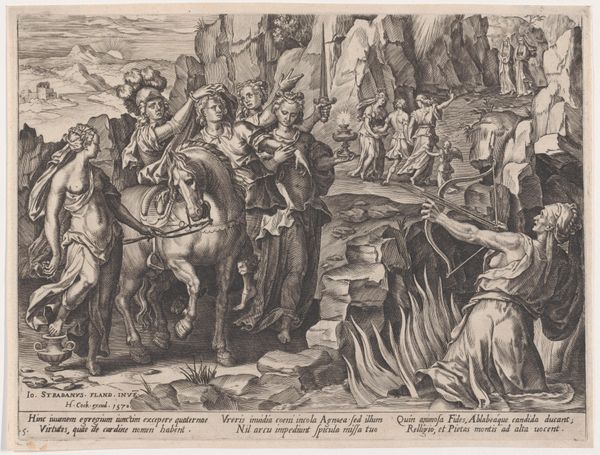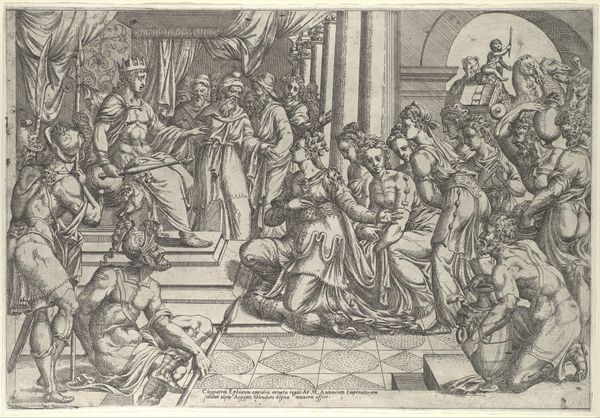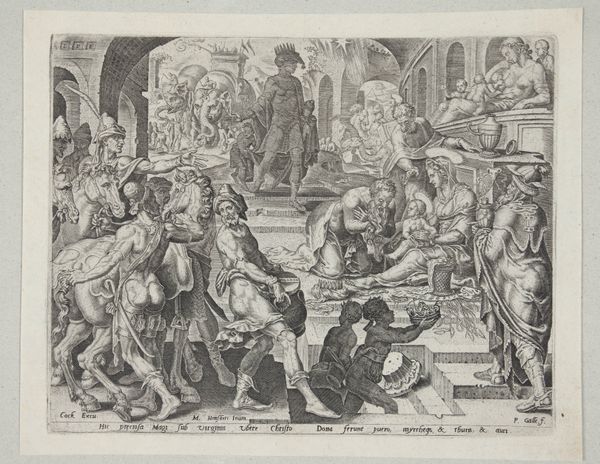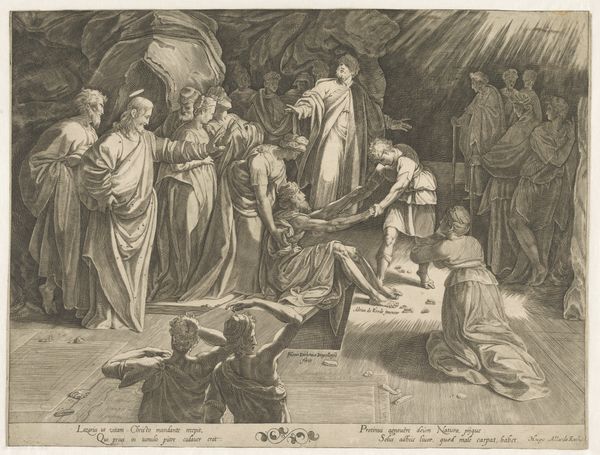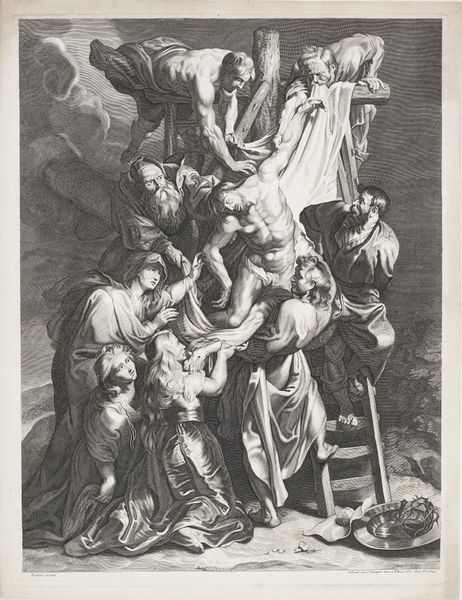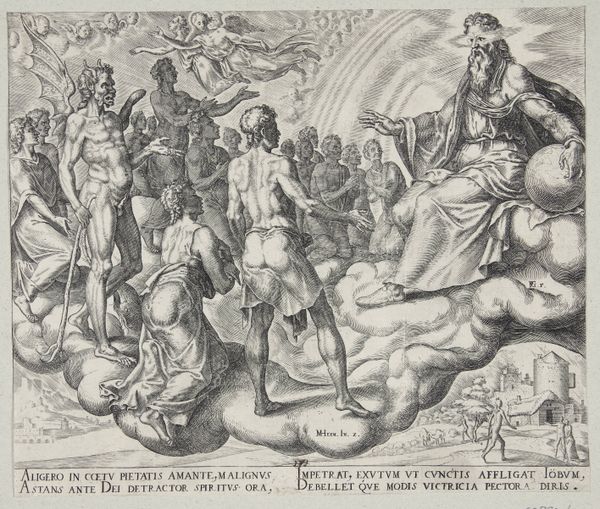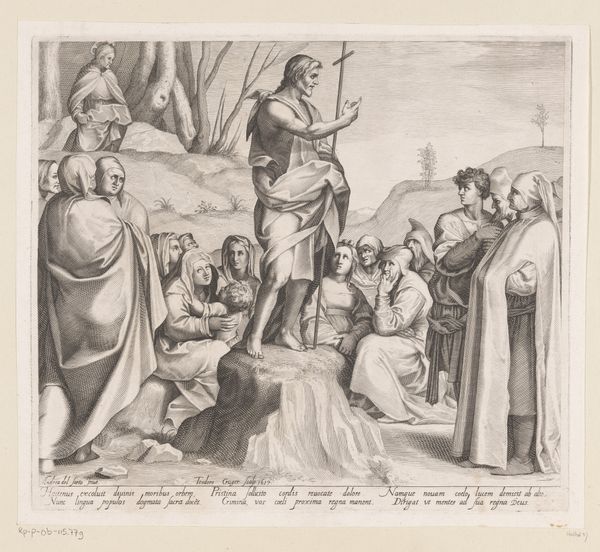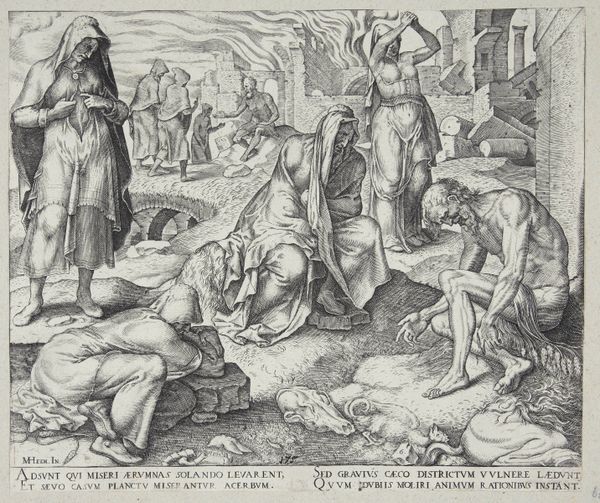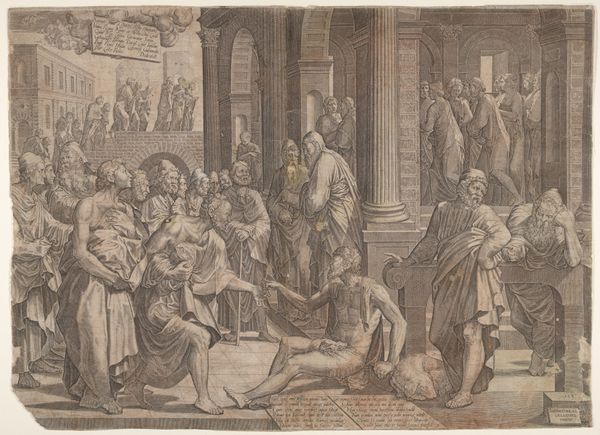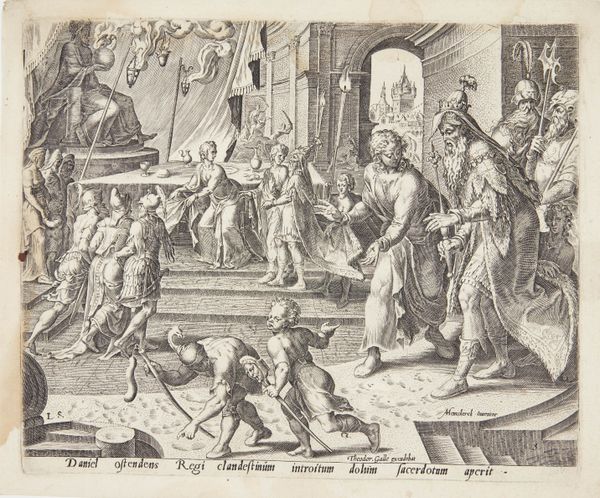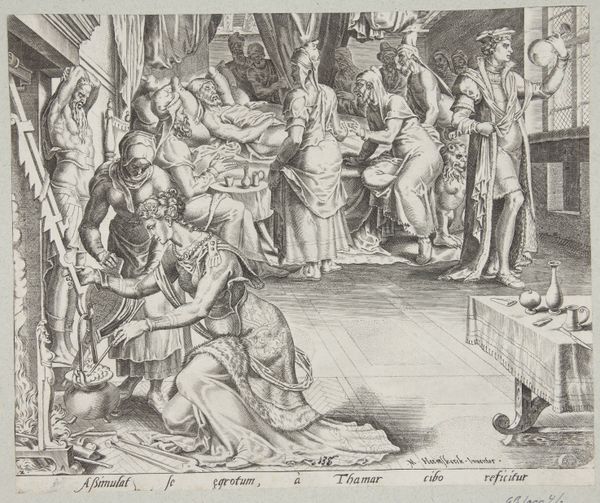
Tamar brought to execution, showing Judah's pledge 1564 - 1567
0:00
0:00
graphic-art, print, engraving
#
graphic-art
#
ink drawing
#
narrative-art
# print
#
figuration
#
history-painting
#
engraving
Dimensions: 205 mm (height) x 255 mm (width) (monteringsmaal), 205 mm (height) x 245 mm (width) (bladmaal)
Curator: Let's consider this engraving, "Tamar brought to execution, showing Judah's pledge" made by Harmen Jansz. Muller between 1564 and 1567. Editor: Thanks! The intricacy of the lines creating this somber historical scene is really striking. The sheer density of figures in such a small space! What can you tell me about its visual composition? Curator: Observe how Muller uses dense, parallel lines to generate tonal variation and a sense of depth. Note also the dynamic tension established by the strong diagonal formed by Tamar being lead towards the pyre juxtaposed with the group observing from the rear. The very precise lines describe forms but also evoke emotional intensity. Editor: The dramatic diagonal is so effective. The whole scene is rendered in such detail - it makes you wonder what is he trying to draw the viewer's eye toward? Curator: Precisely. Ask yourself what structural purpose do they fulfill? Is it merely illustrative, or do those stylistic decisions influence the image's message? Semiotically speaking, we see several sets of hands with distinct purposes which function almost like notations. Consider the tension arising from how figures are brought together as part of this historical drama versus where they sit relative to the execution being readied, namely inside the frame versus outside the action. Editor: I see that distinction now; thank you! There’s an active group preparing the fire contrasted by the more contemplative assembly of figures with Judah holding the proof of Tamar’s claims. The composition mirrors the narrative. Curator: Exactly. So how do you interpret the relation between subject and form now? Editor: Considering the emphasis on formal relationships within the work, I appreciate the connection between Muller's technique and the story being conveyed. It becomes clear how the choices of composition influence the viewer's perception and reaction. Curator: Indeed. And how through these choices the artist allows the viewer an engagement that is both aesthetic and intellectual.
Comments
No comments
Be the first to comment and join the conversation on the ultimate creative platform.
